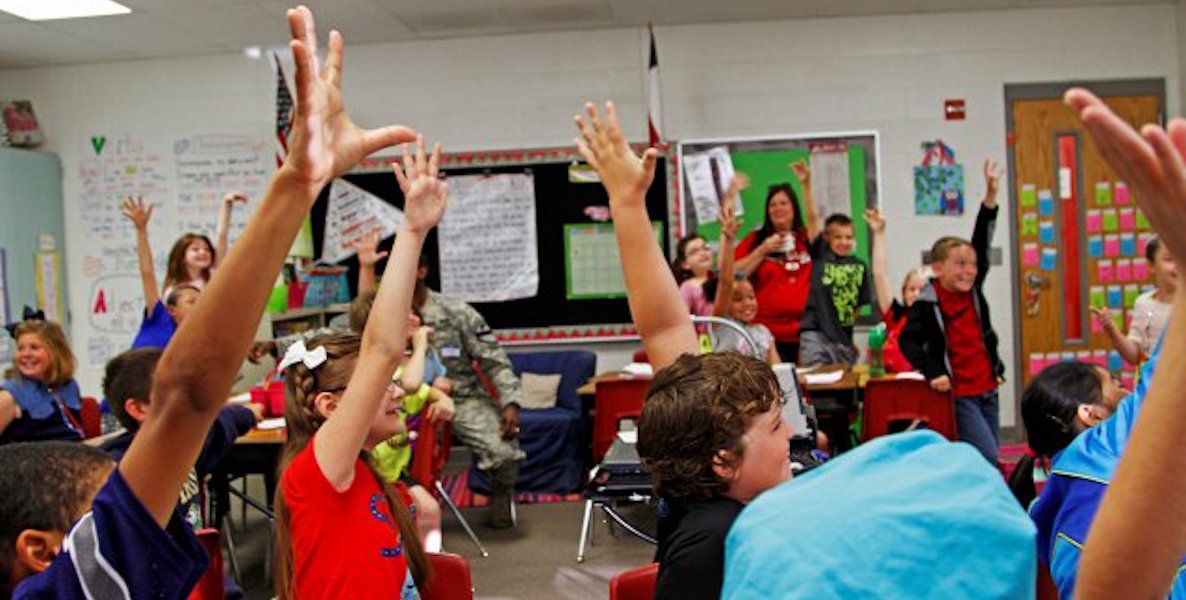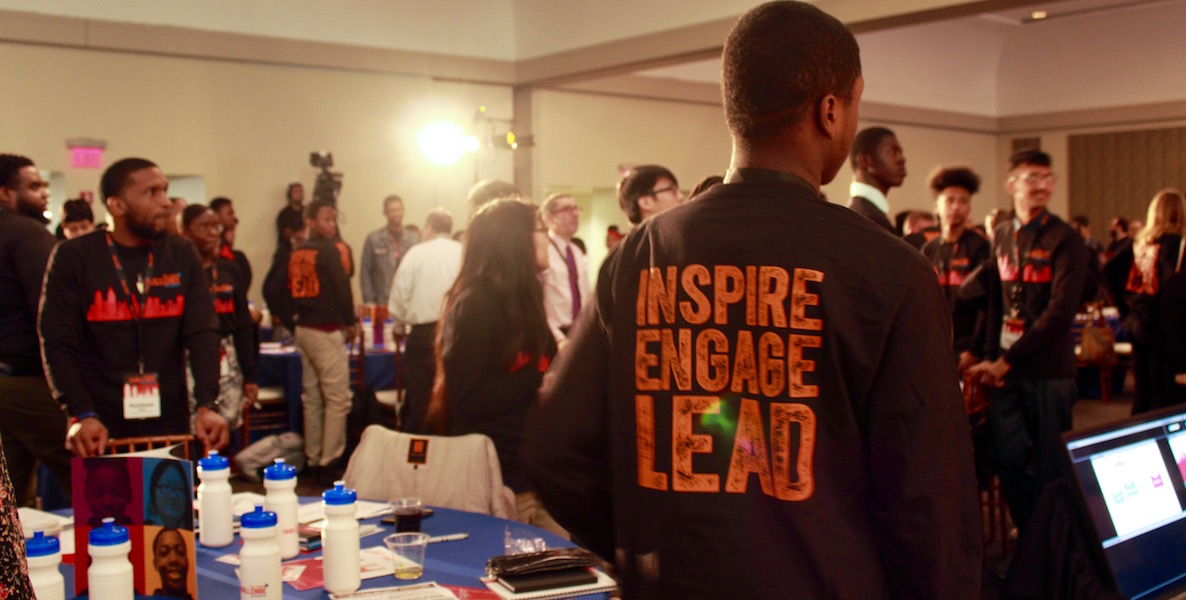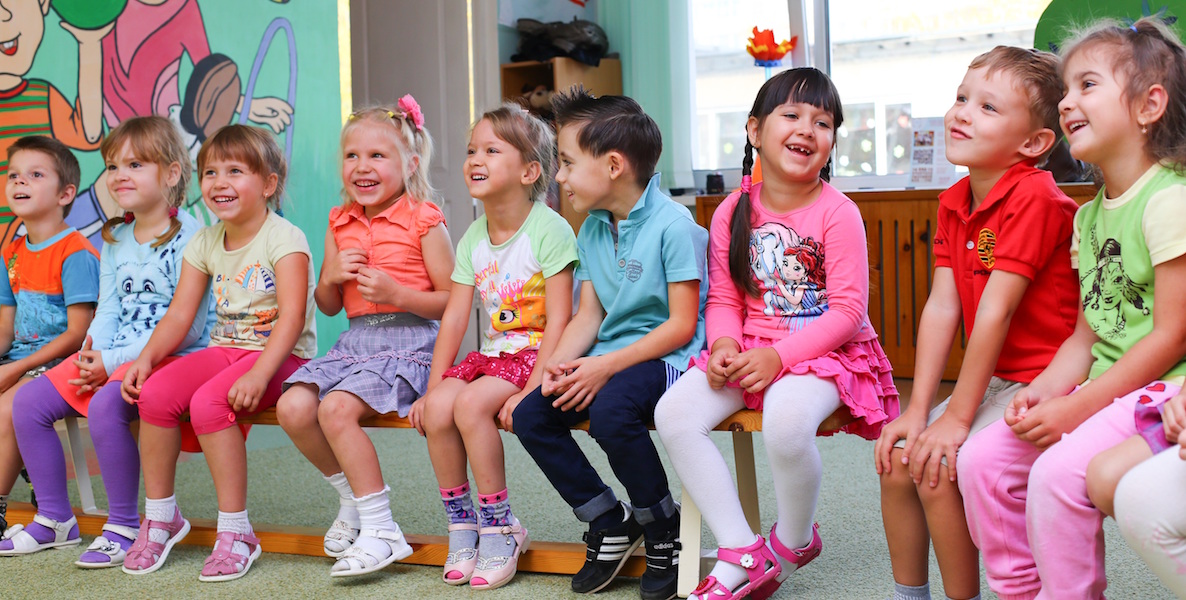When Joseph Curtatone, the mayor of Somerville, Massachusetts, hears about a problem in a local school—low attendance rate, or dropping scores, or incidents of violence—he doesn’t just reach out to his schools superintendent, or to principals, to find out what can be done to solve it. Instead, the Mayor of the small city outside Boston turns to, well, everyone.
Curtatone will call the police department and fire officials, suggest they maybe circle the block before school so kids feel safe. He’ll reach out to businesses and local hospitals and community groups. He’ll speak to residents. And he’ll ask them all: “What have you done for children lately?”
That’s a reflection of how Curtatone approaches nearly every aspect of governing his city—with a focus on children. In 2009, Curtatone launched the Somerville Promise Alliance (SomerPromise), a community-wide effort to address the academic, social and environmental needs of children, during and out of school, from cradle to career. Now he holds monthly meetings with his schools superintendent, leaders of the local anti-poverty agency, public health agency, and nonprofit community groups to decide together how and where to set up programs, and focus their efforts—working as one, rather than as separate siloed institutions.
What if Mayor Kenney expanded his vision, called everyone to the mat to focus on children, the way they do in Somerville? Imagine if Kenney said to all of us: “What have you done for kids lately?”
“We get together and ask how can we collectively think about making changes to increase the number of kids who can learn?” says Anna Fox Doherty, director of SomerPromise. “Then we can make decisions about how to allocate resources.”
At one recent meeting, for example, the group included all the organizations in town that provide out of school time services, which are often key to closing the achievement gap between children of means and those without. They looked at citywide data that compared the numbers of students eligible for free/reduced lunches in particular schools with the numbers of children from those neighborhoods who are attending after school programs, to see where there are gaps in their services. They then developed a plan for filling that gap—subsidizing more after school slots for young kids, developing programs for kids who would be the first in their families to go to college, bringing more programs to where the kids most in need are.
![]() SomerPromise is the sort of “Children’s Cabinet” initiative that mayors around the country are launching, for a reason that has become increasingly clear: Fixing schools is not enough to fix what keeps children in poverty from being as successful as their better off peers in school, and after. That may require a full-scale embrace of every part of a child’s life, particularly for kids who don’t get what they need at home and in their neighborhoods.
SomerPromise is the sort of “Children’s Cabinet” initiative that mayors around the country are launching, for a reason that has become increasingly clear: Fixing schools is not enough to fix what keeps children in poverty from being as successful as their better off peers in school, and after. That may require a full-scale embrace of every part of a child’s life, particularly for kids who don’t get what they need at home and in their neighborhoods.
“Thinking about city budget, priorities, decision-making through the lens of kids ensures good outcomes for everybody,” says Doherty. “When you think about parks, playgrounds, transportation routes, public safety, education—right off the bat you’re being more inclusive of marginalized populations. And you’re growing a whole generation of people who will have less need of very expensive services down the line, and less unhealthy behavior.”
“Affluent kids get this wraparound support and individual attention from birth until they’re in their 30s or 40s,” says Harvard’s Reville. “How do we do that for kids who don’t come by that social capital by dint of birth?”
Several states have had a version of a Children’s Cabinet off and on for decades, often at the whim of governors, except in the few cases—like Maryland—where it has been enshrined by legislation. (Pennsylvania had one for a few years, but has not for several years.) Usually, it is a panel of department heads from different government agencies that in some way work with children, who get together to coordinate their efforts. In recent years, though, mayors have started to launch their own local cabinets, often—like in Somerville—incorporating not just government departments, but also social service agencies and other community stakeholders.
About 15 cities, large and small, now have some version, including New York City, New Orleans, Newark, Denver, Oakland, Providence and Louisville, Kentucky. Elizabeth Gaines, senior fellow at The Forum for Youth Investment, which advises Children’s Councils, says she has urged Mayor Kenney’s office to start one here. (It hasn’t happened yet.)
This comes after two decades of school reform whose goal is something like this: If we can get schools to all be equally good, then we will have created what we need for all children to succeed. That has meant, since the early 1990s, a national effort to set standards; measure progress; hold schools accountable; add school choice; focus on teaching; use data; eliminate chronically low-performing schools. But, as we can attest here in Philadelphia, that has not really worked. Even in Boston—considered the best urban district in the country, in the state with the best education system in the country—there is a striking achievement gap between students of means and those (usually brown or black) without means, reinforcing an inequity that is a hallmark of urban (and American) life.
![]() “Absolutely, morally, the goal we had was right—to make schools equal,” says Paul Reville, a former secretary of education in Massachusetts, who directs the Education Redesign Lab at Harvard University whose By All Means project is helping six cities to track the progress of their cabinets. “But there are a whole lot of other factors outside of school that impact students’ ability to attend, to pay attention, to do well. Affluent kids get this wraparound support and individual attention from birth until they’re in their 30s or 40s. How do we do that for kids who don’t come by that social capital by dint of birth?”
“Absolutely, morally, the goal we had was right—to make schools equal,” says Paul Reville, a former secretary of education in Massachusetts, who directs the Education Redesign Lab at Harvard University whose By All Means project is helping six cities to track the progress of their cabinets. “But there are a whole lot of other factors outside of school that impact students’ ability to attend, to pay attention, to do well. Affluent kids get this wraparound support and individual attention from birth until they’re in their 30s or 40s. How do we do that for kids who don’t come by that social capital by dint of birth?”
One answer, which Reville has touted, is to open community schools, hubs of learning that are also community hubs for social, health and other services—a way to address some of the issues that prevent children from being able to learn. (Philly now has 13 such schools, with plans to launch 12 more in the next few years.) A Children’s Cabinet takes that idea beyond school buildings, and turns it into a whole community effort that reaches deep into pockets of the city where there is need. Under the direction of a mayor, the cabinets are formed with a particular mission—education and employment success, for instance—and regularly meet to figure out ways to achieve those goals. This allows for a concentrated, streamlined approach to children’s issues, rather than the disparate (and often redundant) efforts that usually happen in cities.
This is not necessarily quick work—but then, nothing involving city government and education ever is. Gaines says it often takes three to four years just for agencies to align their systems, even using the same language and metrics so they can compare resources. It can take up to a decade to see measurable outcome results. But there is already incremental change happening in all these cities, from cultural shifts to the deployment of technology to access to better information.
In Somerville, for example, Doherty says the group has launched the first ever website for parents that puts all information related to the city’s children—school registration, events, parks, and the like—in one place, for easy access. Louisville has started looking at how individual students spend their out of school time, to fan their programming out to areas of the city with the most need, with as little replication and few gaps as possible. Denver, which launched a Children’s Cabinet in 2012, has just compiled neighborhood level data on how kids are faring in a variety of ways, including health and school readiness, so it too can begin distributing services to kids who most need them.
As Gaines has noted, Philly has much of what’s needed for a Children’s Cabinet, including an Office of Education in City Hall and the robust collection and collation of data. What all these other cities have in common, though, is a mayor who has made the case that to be a prosperous city, children must succeed, and that children’s success must be everyone’s responsibility, not just those whose work brings them in contact with students.
![]() That means breaking down the silos of business, and nonprofits, and government, and education—the sort of big picture, all in it together thinking that Philly too often lacks. It means, too, streamlining government—combining youth-centric efforts under one umbrella rather than allowing each department its own piece of the pie. Can that even happen here?
That means breaking down the silos of business, and nonprofits, and government, and education—the sort of big picture, all in it together thinking that Philly too often lacks. It means, too, streamlining government—combining youth-centric efforts under one umbrella rather than allowing each department its own piece of the pie. Can that even happen here?
To his credit, Mayor Kenney seems to have made a decision to be the city’s education mayor, whose legacy will be tied to children’s ability to access great schools. His Office of Education has launched a universal pre-K program and community schools; he’s taken control of appointing the school board. But as Reville points out, that is not likely to be enough in a city where 25 percent of the general population and 35 percent of children live in poverty.
Philly’s education reform efforts have made inroads, incrementally upping the graduation rate and improving test scores. But they have not, in any significant way, prepared students living in poverty for 21st Century jobs, the kind that require high levels of skill and education. A school district of 130,000 students is no small thing to take on—yet it may prove too small to tackle the problem of economic access for generations of Philadelphians.
Instead, what if Mayor Kenney expanded his vision, called everyone to the mat to focus on children, the way they do in Somerville? Imagine a Zoning Commission meeting, in which developers were asked to think about the kids: That could mean pushing for new parks, or to rehab the local rec center, or to install a 24-hour daycare for night shift workers, something that would also diminish some effects of gentrification.
Imagine if the city’s proposed Juvenile Justice Hub were part of the Cabinet: Police could point out neighborhoods where kids need more evening activities, where Coded By Kids might think about setting up programming classes, or Mighty Writers might open up a new branch. Imagine if hospitals, schools, libraries, even retailers were all having the same conversation, so they could set up clinics, job fairs and other resources where the data says it’s most needed.
Imagine if Mayor Kenney said to all of us: “What have you done for kids lately?”
Correction: An earlier version of the story misidentified Elizabeth Gaines’s position. She is a senior fellow at the Forum for Youth Investment.
Photo: pxhere (CC0)







